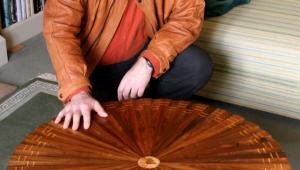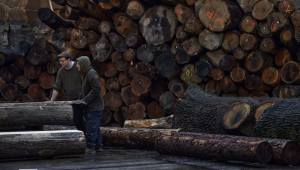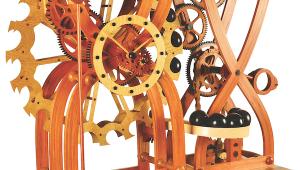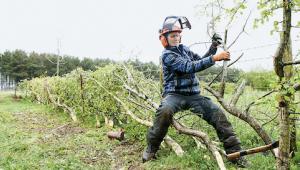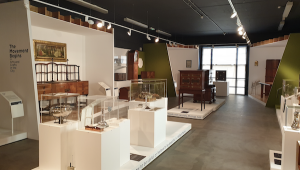Andrew Lawton: A very English furniture maker
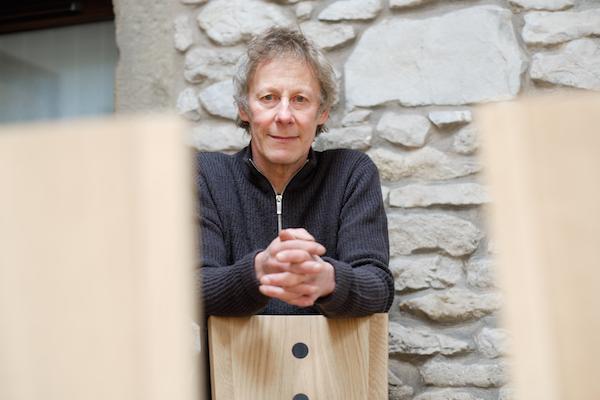
In the mid 1970s, working ‘with your hands’ was often seen as not quite the thing for anyone with academic ability. Andrew’s interest in becoming a silversmith was discouraged and after wasting time in the sixth form, he embarked – without any particular enthusiasm – on a geography teaching course. While enjoying the student life, Andrew came to realise, towards the course’s end, that a future in teaching wasn’t actually for him.
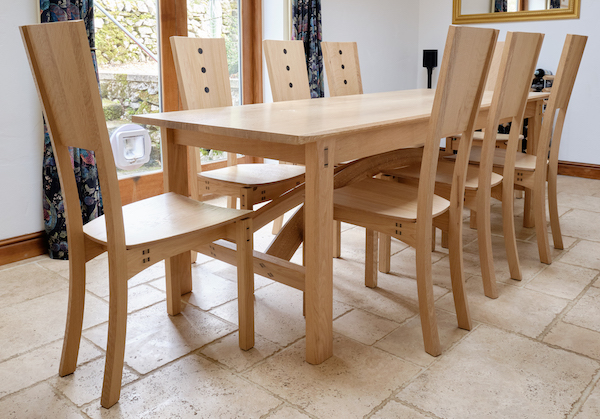
In one of those life changing moments that Andrew vividly recalls, it was after reading an article in Monastic Woodcraft magazine, about a small workshop in his native Derbyshire, where a range of high quality traditional oak furniture was being made. So the die was cast, and Andrew went on to become a craftsman in wood.
Growing up surrounded by woodworking and furniture making, Andrew’s father, Harry (1919–2016) taught the subject in addition to technical drawing, and in an unusual combination, English, up to A level; however, the idea of earning a living in this very profession hadn’t occurred to Andrew before. At this time, he wasn’t sure he even possessed the ability to achieve these necessary skills, and no-one was more surprised when this decision was announced than his father.
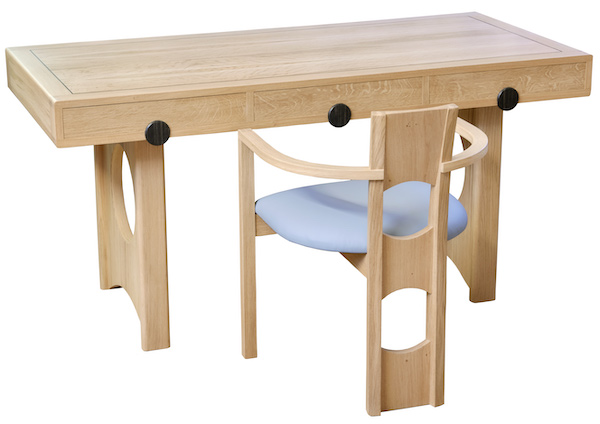
Father & son
Today, this notion seems hard to believe, but back then, opportunities to train as a cabinetmaker were fairly limited, and having drawn a blank elsewhere, Andrew went on to become Harry’s pupil. Lawton senior knew his stuff, having been described by former students as an inspirational teacher and Alan Bradshaw – author of Handmade Woodwork of the Twentieth Century – remarked on him having been one of the few woodwork teachers he’d met who was good at designing furniture as well as making it.
“From that moment on, along with a part-time job to bring in the money, I lived and breathed furniture,” Andrew says. With a thorough grounding in technique, he recalls that for the first few months, everything had to be done by hand apart from use of a table saw. “The first thing I made was a small dovetailed box in white ash, which was as hard as iron, followed by an elm coffee table.”
Over the next two years, as his skills developed, projects became progressively more advanced, along with Harry’s insistence that every aspect of the job should be completed to a high level. Harry encouraged his son to have a business-like attitude, stressing the need for both accuracy and speed, which are essential for any prospective craftsman hoping to earn a living from this work. “Being taught by one’s own father isn’t ideal, but in retrospect, the one-to-one aspect and encouragement was invaluable,” he comments.
A chance to take over the semi-derelict ‘Pioneer Derbyshire Craftsman’ workshop – according to the Sheffield Telegraph, Ben Coopland (c.1895–1965) – in the Peak District village of Grindleford, was too good an opportunity to pass up, so Andrew took the plunge and set about trying to bring it back to life.
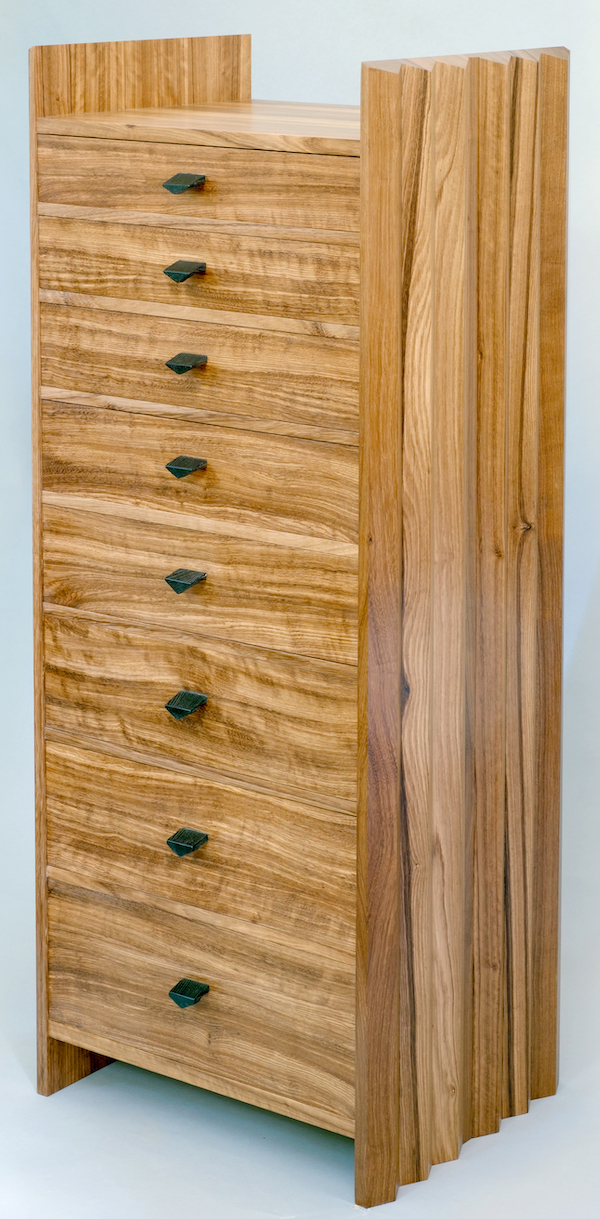
Branching out
Despite Andrew’s sound training, he had no real idea of how to run a business, and in hindsight, should have spent a few years working for someone else before striking out on his own. On the plus side, this gave him the chance to know that he could actually work well on his own, and as such, the idea of running a small business appealed.
The workshop, surrounded by weeds and used for repairing cars, was in a sorry state when Andrew first started out, as he explains: “I felt very much like ceramicist Michael Cardew did, as detailed in his autobiography, with the wonderfully evocative description of his first visit to the disused Winchcombe Pottery. I just knew this was my destiny.”
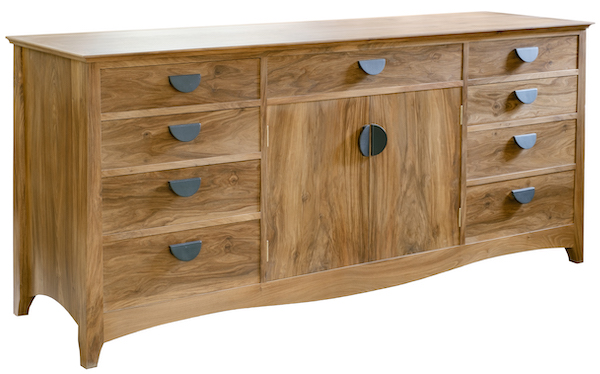
Workshop renovation was Andrew’s first task, and back in the early days, the only machines available were a new Startrite sawbench, second-hand surface planer – no thicknesser – a mortiser and an electric grindstone. In this day and age, this seems hard to believe, but until Andrew purchased a bandsaw, he’d previously had to cut out chair legs by hand, using only a framesaw, which was understandably a very laborious process: “It was far from ideal, but my hand tool training helped me through the first couple of years, until I could afford to buy more machines.”
To help pay the bills, Andrew took on a part-time job, working as a technician in the craft department of a local school, as well as teaching some evening classes. Fast forward to present day and the workshop – with 3-phase electricity – is now equipped with a sliding table panel saw; a smaller precision sawbench – great for cutting stringing, etc. – along with a planer/thicknesser, bandsaw, mortiser, spindle moulder, router table, woodturning lathe, pillar drill, dual drum sander, and dust extraction system. “Most of these are carefully chosen second-hand items,” Andrew comments. “In a small workshop where machines work intermittently, well-maintained second-hand kit makes more economic sense,” he shares.
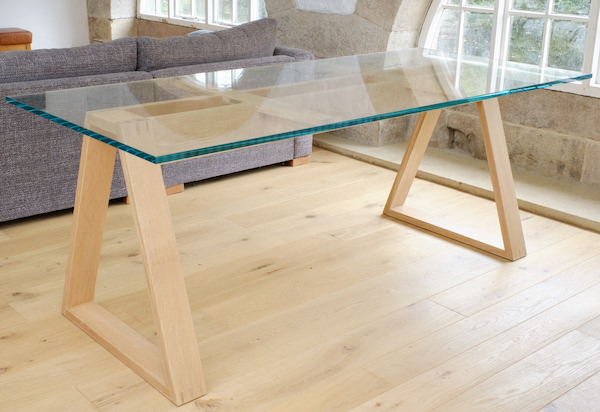
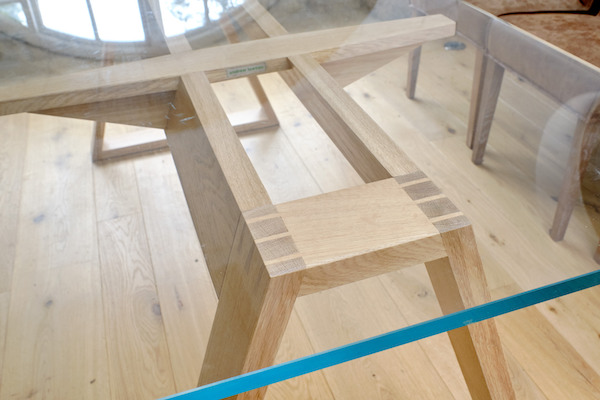
The ancient Wadkin bandsaw, dating from the early part of the 20th century, and since fitted with modern guides and replacement rubberised cork ‘tyres’ on the pulley wheels, can out-perform many a modern machine, such was the build-quality back then. The set up is completed by a range of power tools, including a biscuit jointer, routers and random orbit sander, plus the usual hand tools. Many of Andrew’s planes are also second-hand – Record models No.7, No.5.5 and a No.5 – fitted with replacement irons from Hock and Ray Iles – and according to Andrew, “this simple modification can transform a tool’s performance.” He isn’t a fan of traditional try squares with rosewood stocks and brass, and instead prefers the all-steel engineers’ pattern. Andrew finds that occasionally, a commission comes in that requires CNC work, and in such cases, this is subcontracted out to another workshop.
Bespoke pieces
In terms of a business plan, Andrew’s aim was to develop a small range of modern furniture based on the Cotswold School of craftsmen’s ideals, sold directly from the workshop and through selected retailers, much as Monastic Woodcraft did with their traditional pieces. Alas, despite numerous attempts made to interest high-end retailers, such as Heals, these came to nothing, but a few workshop sales did start to trickle in. More positively, Andrew exhibited and sold work at the Prescote Gallery in Warwickshire alongside such illustrious names as Rupert Williamson, Alan Peters and Jeremy Broun. Betty Norbury was starting to organise the first of many exhibitions, and with John Makepeace widely known, this brought welcome publicity for the craft.
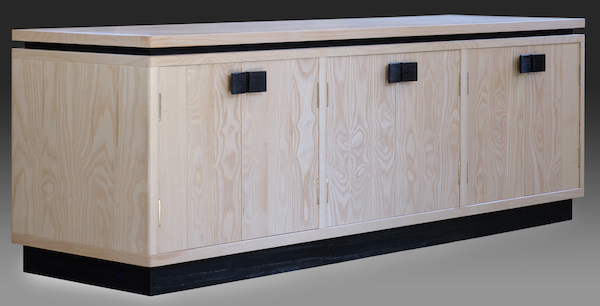
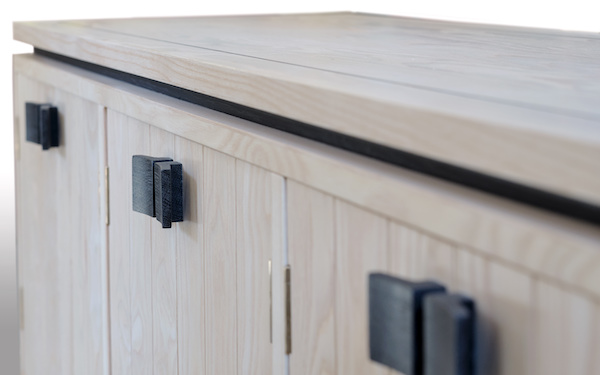
Despite the country’s political and social problems, the early 1980s was a good time to start out as a fine furniture maker. Coinciding with this, the now closed Staffordshire Peak Arts Centre offered Andrew the fantastic chance of a week-long one-man show, and luckily, he had sufficient pieces in stock.
Plenty of warm words were exchanged, although sadly no sales, but as a result of an interview on local radio, Andrew did finally receive an enquiry from a couple looking to have a complete dining room scheme made. The start of a pathway towards professional and financial success, instead of creating a range of ready-made furniture and trying to find customers to buy them, Andrew instead made special pieces according to customers’ particular needs. In other words, providing a design and making service, creating bespoke, high-quality pieces that aren’t available to purchase from conventional furniture retailers.
40 years of success
Over the last 40 years, Andrew has followed this very formula: designing and making bespoke pieces for clients, many of whom return, sometimes years later, to commission further work. In addition to this, Andrew also makes pieces according to his own brief and design, which he sells from the workshop as well as taking to exhibitions.
When working to commission, however, makers face the danger of finding themselves pandering to clients’ whims and creating work they don’t really believe in. Andrew admits that he’s done his fair share of this: “Staining beautiful natural oak dark brown to match existing furniture, glazing cabinets doors with leaded lights, and other such horrors. I choose to take a pragmatic view of this: if a maker is to earn a living from his or her craft, then compromises have to be made, especially in the early years. The bread and butter work helps to subsidise the creative aspect we really want to do, and ultimately we can still take pride in making a piece to a high standard, even if not to our chosen design,” he explains.
Looking at Andrew’s portfolio of work and the source of his commissions, he sees himself as a maker as opposed to an innovator, but one who continues to develop the tradition of fine English furniture. Rooted in the Arts & Crafts movement and Cotswold School of craftsmen pioneers, Andrew has inevitably absorbed other influences along the way, such as an interest in Art Deco architecture. However, sound woodworking techniques and a thorough understanding of the material underpin all of his designs, which are never ostentatious and frequently contain subtle detailing that’s only revealed on close inspection.
Andrew’s pieces often combine different timbers and tend to have a geometric feel; few would describe these as either organic or sculptural. This understated refinement led Jeremy Broun to describe Andrew as ‘A Very English Maker’, which is further explored in a documentary of the same name. No one adventurous enough to commission bespoke furniture could be called ‘average’, but Andrew’s clients and customers are mostly well educated professionals with a reasonable disposable income: “My work isn’t flashy enough to appeal to celebrities or rock stars, for example, but there are exceptions,” he says.
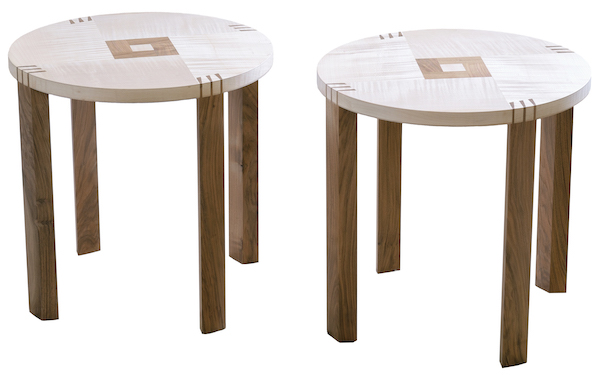
Home & away
Over the years, Andrew’s workshop has become increasingly mechanised, with each new piece of kit widening the scope of work produced, although hand skills remain the bedrock of his furniture. Veneers are often cut on the bandsaw and fed through a drum sander for thicknessing, but all dovetailing, for example, is completed by hand. “There’s something almost magical about planing a piece of timber by hand, seeing and hearing the shavings sweetly curling onto the floor.”
Andrew hasn’t always worked alone, however – numerous college graduates have spent time with him before moving on to larger workshops or setting up on their own. Such names include Mark Applegate – who now works in the USA; Sam Chinnery – who now has his own workshop in Scotland; Niall Stoffell – Workshop Manager at Treske Furniture; and Sam Ring, who’s since set up a workshop in Sheffield. Likewise, Andrew has also worked elsewhere, and over the years, spent several months teaching in the USA followed by the opportunity to work with the late Alan Peters OBE. In fact, the last ever piece to come out of Alan’s workshop was made by Andrew.
Award-winning maker
In recognition of his great skill and craftsmanship, Andrew has received three prestigious Bespoke Guild Marks from the Furniture Makers’ Company; his work has featured in several books including Betty Norbury’s Furniture for the Twentieth Century and Bespoke; not to mention two of his pieces having been shortlisted for the Wood Awards.
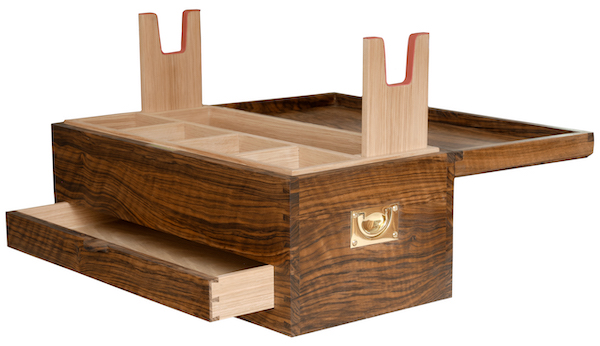
It’s reassuring to learn that Andrew has no plans to stop doing what he loves best and we look forward to seeing future work, but according to the maker, he’s yet to make his best piece to date, so watch this space.
Photographs courtesy of John Mottershaw
FURTHER INFORMATION: To find out more about Andrew and his work, visit the website: www.andrewlawton.co.uk.
- Log in or register to post comments

